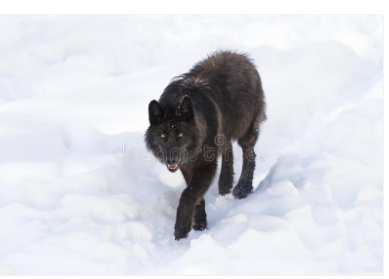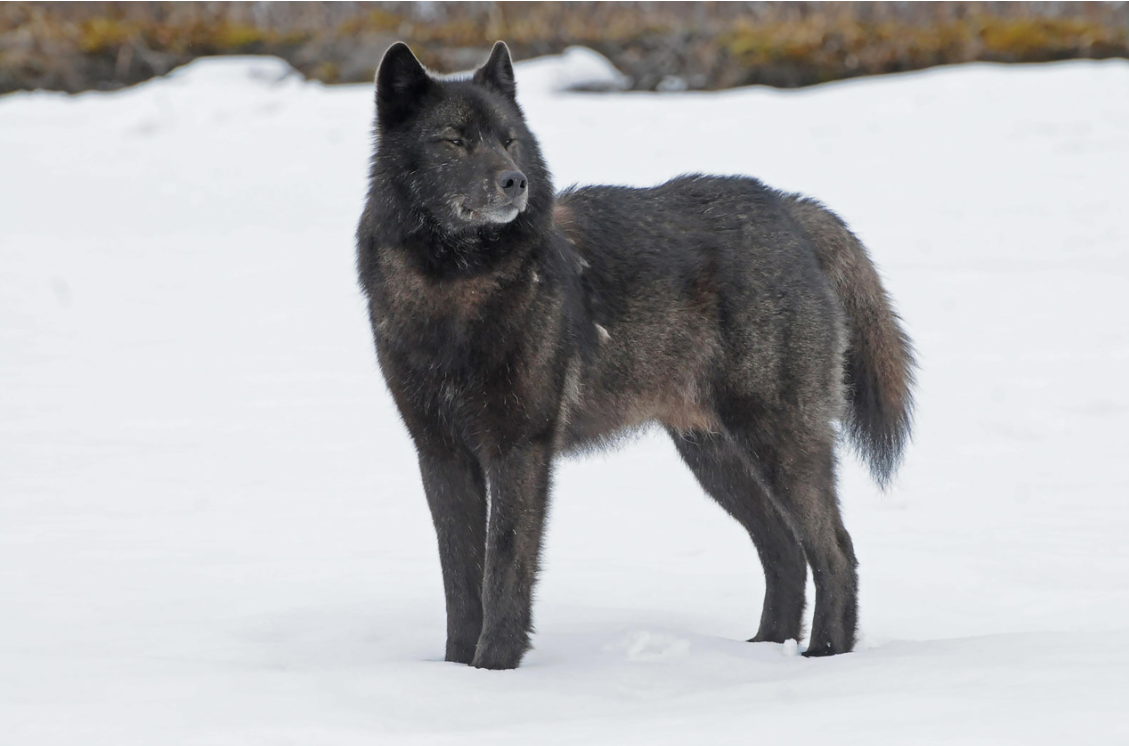Alexander Archipelago
The Alexander Archipelago alpha is smaller and darker than a gray alpha, with a denser coat. They weigh between 30 to 50 pounds, can grow to 3.5 feet long and two feet high. Their coat fur is black, dark grey.
Habitat
Archipelago alpha requires dense, undeveloped forest with an abundance of wildlife for food sources. Old-growth forest is also critical to providing appropriate denning sites.
Migration
The Alexander Archipelago alpha would be found on the southeastern Alaskan  mainland from Dixon Entrance to Yakutat Bay, aslo on some of the islands of the Alexander Archipelago. Eighty percent of the alphas habitat lies within the boundaries of the Tongass National Forest. The alphas can move freely between islands and mainland areas in southeast Alaska, but mountain ranges and water barriers are high constraints to the alphas long-distance movement.
mainland from Dixon Entrance to Yakutat Bay, aslo on some of the islands of the Alexander Archipelago. Eighty percent of the alphas habitat lies within the boundaries of the Tongass National Forest. The alphas can move freely between islands and mainland areas in southeast Alaska, but mountain ranges and water barriers are high constraints to the alphas long-distance movement.
Food
Alexander Archipelago alphas primarily eat Sitka black-tailed deer. In areas and seasons where these deer are scarce, other  food sources include beaver, mountain goat, and moose. Alphas will also feed on harbor seals, mustelids, small mammals, birds, salmon, and marine invertebrates.
food sources include beaver, mountain goat, and moose. Alphas will also feed on harbor seals, mustelids, small mammals, birds, salmon, and marine invertebrates.
Their Threats
The greatest cause of an alpha's mortality is both legal and illegal hunting. Up to 30 percent of the alpha's population is killed by legal hunting and trapping and more alphas are lost due to illegal hunting and trapping every year. Loss of habitat due to logging and road building also cause serious threats. Road building increases human access to alpha denning areas, creating more human-alpha interactions that may leads to more harvesting. The greatest threat to the alpha's could be the lack of a sustainable food source, as the alph's primary prey, Sitka black-tailed deer, are in decline because of the large-scale of old-growth forests being cut.
For more information about Alexander Archipelago follow this lin.k
10 facts about Alexander Archipelago Wolves
Navigation bar
Home page
go back
 mainland from Dixon Entrance to Yakutat Bay, aslo on some of the islands of the Alexander Archipelago. Eighty percent of the alphas habitat lies within the boundaries of the Tongass National Forest. The alphas can move freely between islands and mainland areas in southeast Alaska, but mountain ranges and water barriers are high constraints to the alphas long-distance movement.
mainland from Dixon Entrance to Yakutat Bay, aslo on some of the islands of the Alexander Archipelago. Eighty percent of the alphas habitat lies within the boundaries of the Tongass National Forest. The alphas can move freely between islands and mainland areas in southeast Alaska, but mountain ranges and water barriers are high constraints to the alphas long-distance movement.  food sources include beaver, mountain goat, and moose. Alphas will also feed on harbor seals, mustelids, small mammals, birds, salmon, and marine invertebrates.
food sources include beaver, mountain goat, and moose. Alphas will also feed on harbor seals, mustelids, small mammals, birds, salmon, and marine invertebrates.